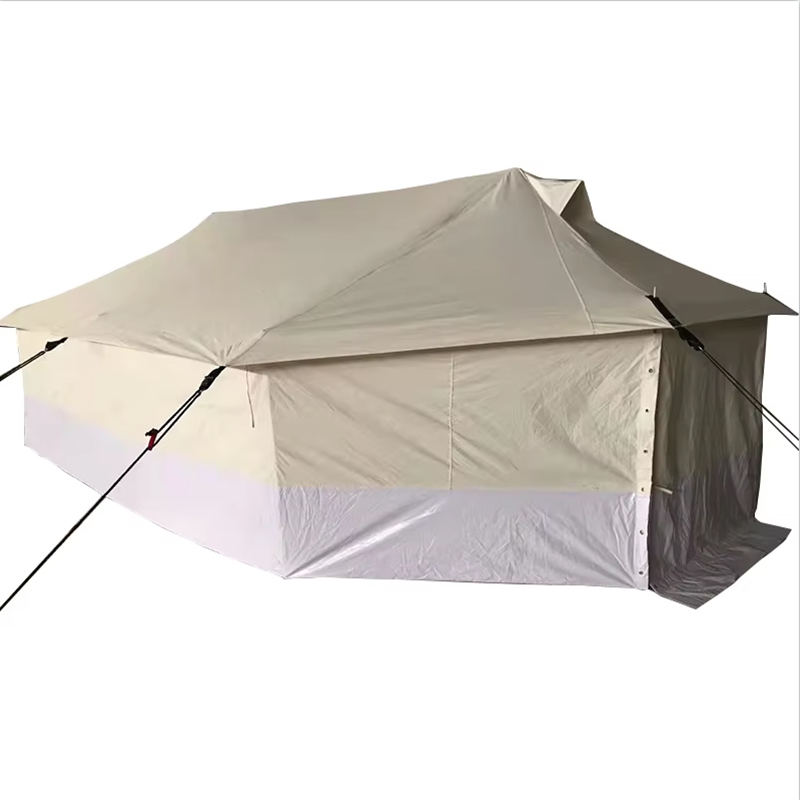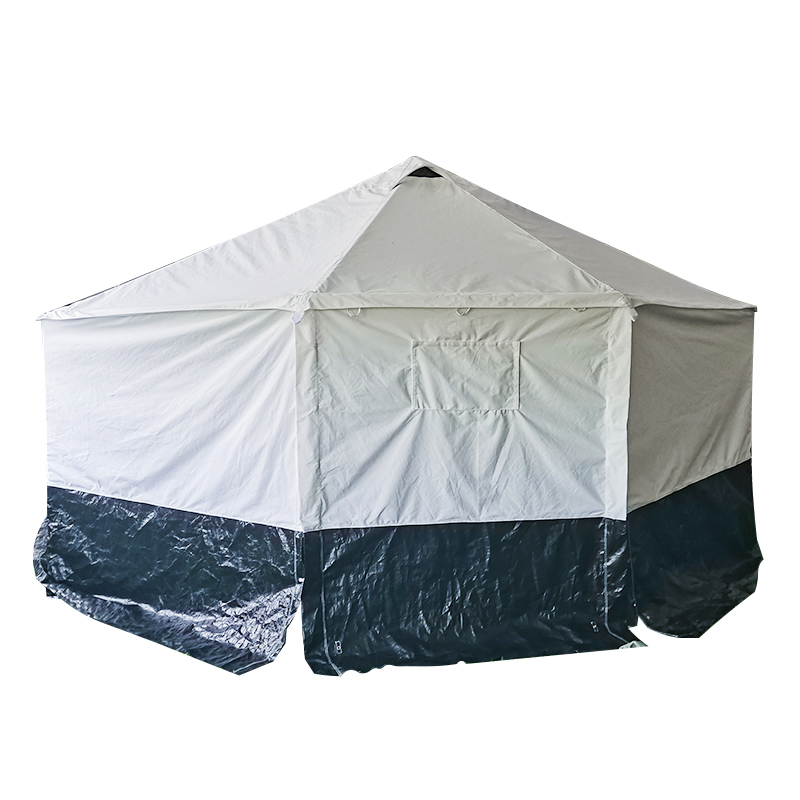-
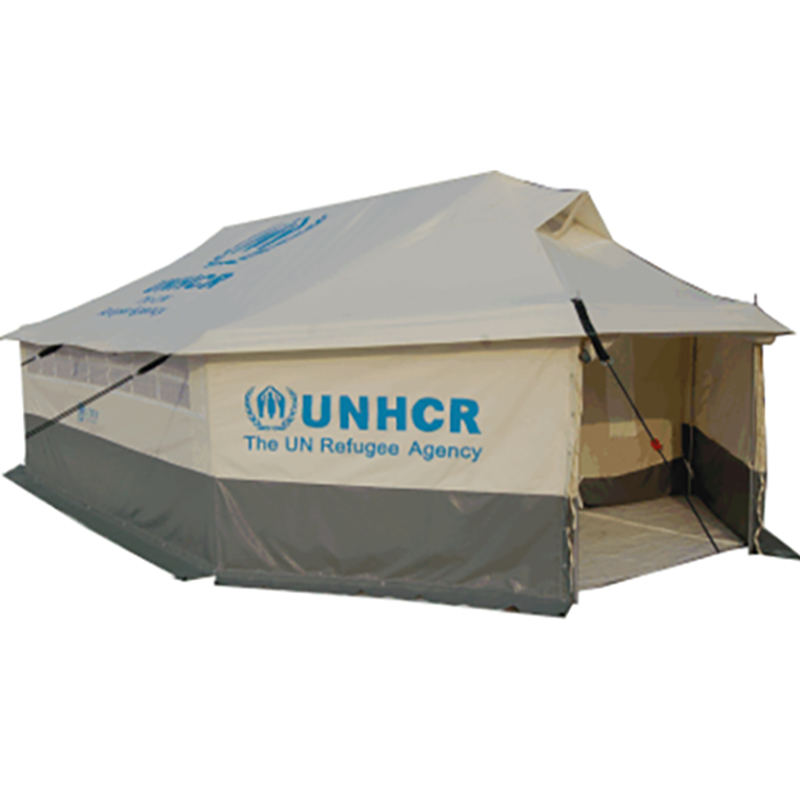 UNHCR Standard 5-Person Family Tent
UNHCR Standard 5-Person Family TentFamily Tent
-
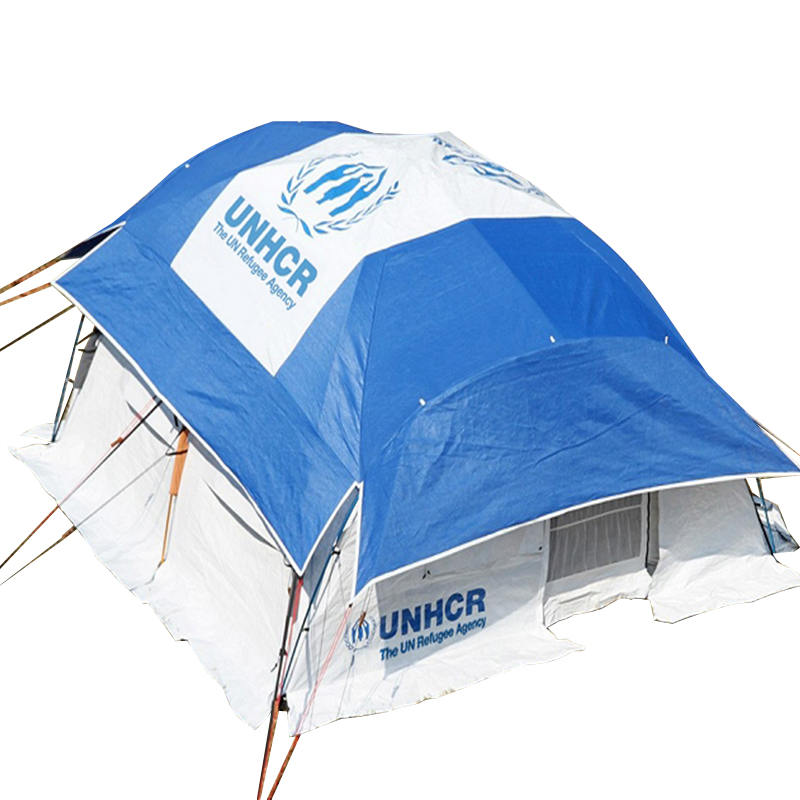 UNHCR Standard Self-Standing Family Tent
UNHCR Standard Self-Standing Family TentFamily Tent
Disaster Relief Refugee Family Tent Manufacturers
Products & Solutions
CONTACT US
-

+86 15695147631
-

-

No.9 Kangmin Road, Automobile industry Park, Yizheng City, Jiangsu Province, China
You can give a family of five who has fled their home a temporary new one, when they arrive at a refugee camp.
For refugee families who’ve been forced to flee their homes, lack of access to safe and warm shelter is a genuine risk, as many are forced to live in shelter not equipped to be waterproof or weatherproof.
A Family Tent is built to be weatherproof in both hot and cold, and will last for a year, with room for five to sleep and to live.
Our family tents are made strictly in accordance with the requirements of ICRC IFRC UNHRC IMF and other organizations, and meet various bidding requirements. Let us work together to provide a comfortable home for those in need.
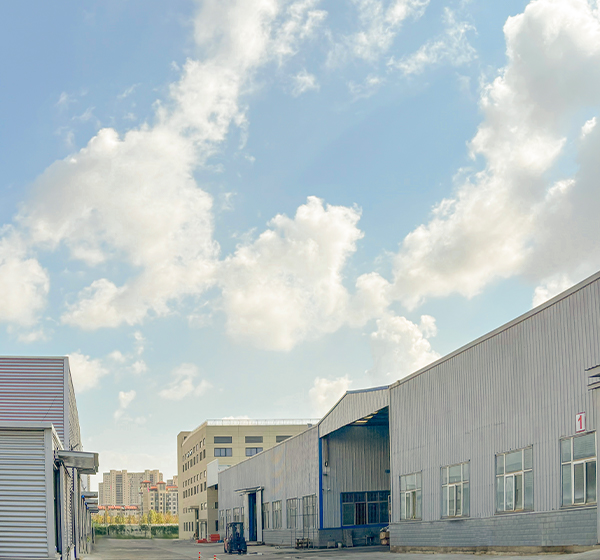
-
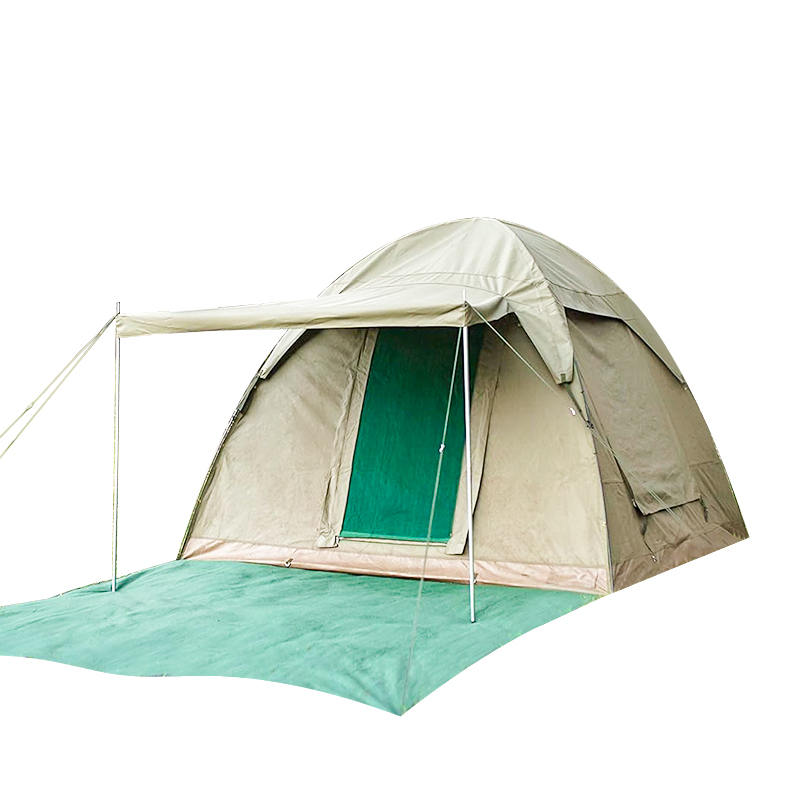
What Do Waterproof Ratings for Camping Backpacking Tents Actually Mean? Waterproof ratings (measured in millimeters, mm) quantify a tent’s ability to resist water penetration, based on standardized hydrostatic head testing. The rating represents the height of a water column the t...
READ MORE -
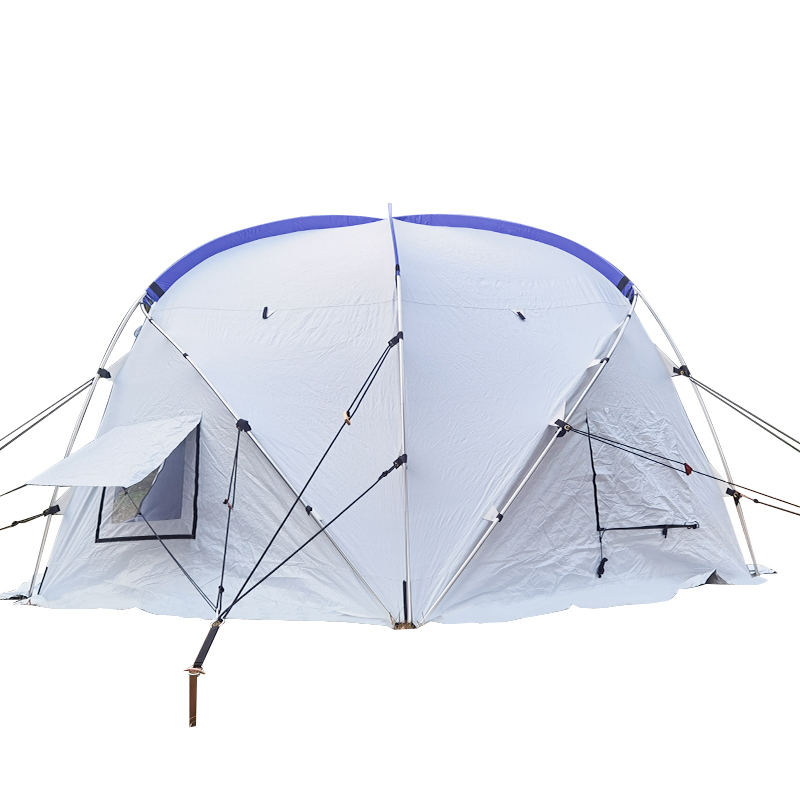
What core fabrics lay the foundation for windproof and waterproof relief tent? The windproof and waterproof performance of relief tent starts with the selection of core fabrics, which must withstand harsh natural conditions such as strong winds, heavy rains, and even hailstorms i...
READ MORE -
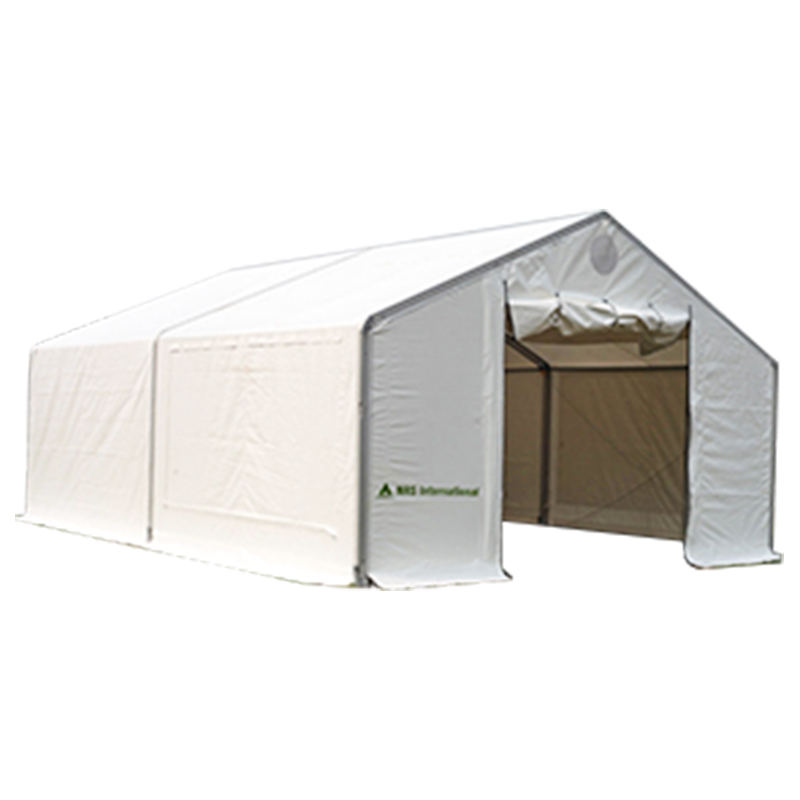
What Cost Advantages Make Warehouse Tents More Economical Than Traditional Warehouses? The core appeal of warehouse tents lies in their significant cost savings, which can reach up to 50% compared to traditional brick-and-mortar warehouses. First, the construction cost is far low...
READ MORE
1. What are the different space design requirements for a family tent depending on the size of the family camping group (e.g., a family of 3-4, a family of 5-6 with multiple children), and how can we avoid the situation of "enough people but cramped space"?
The spatial requirements for a family tent vary primarily in terms of "living space" and "functional zoning." A family of 3-4 should choose a tent with a floor area of at least 4m x 2.5m and a ceiling height of at least 1.5m to ensure comfortable sitting and lying for adults, while also allowing space for two to three sleeping bags or air mattresses. A family of 5-6 with multiple children should choose a tent with a floor area of at least 5m x 3m. It is recommended to choose a tent with partitions (e.g., "master bedroom + children's area") to prevent children from disturbing the adults' rest. A separate area should also be reserved for camping gear (e.g., suitcases, folding tables and chairs). Furthermore, regardless of the number of people, vertical space must be considered. A high ceiling (over 1.6 meters) is essential for adults to stand and move around inside the tent, reducing the feeling of oppression. This ensures a comfortable and comfortable space, ensuring both horizontal and vertical space.
2.A family tent needs to accommodate both adult rest and children's activities. What clever interior design ideas can meet both needs?
To achieve this balance, the interior layout of a family tent can be balanced through partitioning and flexible accessories. First, a "main rest area + separate activity area" layout can be adopted. The main rest area can be used for sleeping, while the activity area can be laid out with moisture-proof mats for children to play. Removable partitions (such as gauze or cloth curtains) separate the two, ensuring that adults can rest undisturbed while providing independent space for children to play. Second, multiple storage pockets can be designed into the interior walls of the tent to store adult phones and glasses and children's toys and picture books, respectively, to prevent items from being scattered and disrupting activities. Some tents also feature an external "extension vestibule," relocating functions like cooking and equipment storage to the vestibule, leaving only rest and activity areas inside the tent, further optimizing space utilization. Furthermore, the flooring of the activity area can be made of a wear-resistant and scratch-resistant fabric to withstand the friction and impact of children playing. The selection and processing of such fabrics can draw on Yangzhou Mailenda Outdoor Products Co., Ltd.'s over 20 years of experience with materials such as PE, PVC, and polyester to ensure durability.
3. Since family camping often involves elderly or children, what safety aspects should be focused on in a family tent to avoid unexpected risks?
To ensure the safety of elderly and children, family tents must be designed with a focus on material safety, structural stability, and detailed protection. Non-toxic and environmentally friendly fabrics (such as OEKO-TEX certified fabrics) must be selected to prevent odors or harmful substances from irritating the respiratory tract of elderly and children. The frame must have rounded corners to prevent sharp edges and injuries, and the connectors must be secure to prevent the frame from loosening and falling. For detailed protection, the tent curtain must have a two-way zipper with a smooth, burr-free zipper head to prevent scratches on children. The floor fabric must be moisture-proof and non-slip to prevent elderly and children from slipping inside the tent. If the campsite is prone to mosquitoes, fine mesh (mesh size ≤ 1mm) should be used, and the seams between the mesh and the fabric must be sealed to prevent mosquitoes from entering and biting. Furthermore, the tent must have an emergency exit (such as a quick-opening side window) to facilitate rapid evacuation in the event of an emergency.
4. families often carry a large amount of camping gear (such as sleeping bags, mattresses, cooking utensils, and toys). How should a Family Tent design its storage space to keep it neat and organized?
To accommodate the diverse gear storage needs of family camping, a Family Tent offers a comprehensive storage system through "tiered storage," "external storage," and "flexible accessories." The interior features a multi-layered storage structure: hanging storage bags on the top of the tent can store lightweight clothing and towels; side pockets can be used to organize small items (such as chargers for adults and snacks for children); and foldable storage boxes on the floor can accommodate larger items like sleeping bags and mattresses. These boxes can also double as seats, providing dual functions. Regarding external space, tents with vestibules can store cooking utensils, folding tables and chairs, and luggage in the vestibule to avoid taking up space inside the tent. Some tents also feature side "gear hangers" for conveniently hanging frequently used items like flashlights and trash bags. In addition, a waterproof shoe bag can be placed at the entrance of the tent to store family shoes, preventing dirt from entering and contaminating the interior, keeping the tent clean from the inside out.
5. Family tent setup may be limited. What features should the family tent setup have to ensure that non-professionals can quickly complete the setup?
Given that family tent setup may be limited, the family tent setup method should prioritize convenience and lightweightness. First, prioritize "quick-open setup" or "pre-assembled stand" designs. Quick-open tents are pre-assembled using elastic stands that automatically form after unfolding, allowing two to three people to complete the setup in 5-10 minutes. Pre-assembled stands pre-assemble the complex pole connections. Users simply insert the stands into the corresponding ports on the tent and secure the ground pegs, simplifying the process and reducing errors. Second, the tent should include a "visual setup guide" with clear instructions (rather than text) to ensure that even the elderly can understand each step. Ground pegs and wind ropes should be color-coded (e.g., red for ground pegs, blue for wind ropes) to avoid confusion. Furthermore, the tent's weight should be kept within a reasonable range (e.g., a 4-6 person tent should weigh ≤15kg) to facilitate family transport and reduce physical exertion before setting up. Precision processing of lightweight frames and fabrics can be achieved with the help of advanced equipment such as automatic cutting machines and laser machines from Yangzhou Mailenda Outdoor Products Co., Ltd., ensuring both portability and structural stability.
6. what are the different fabric and functional requirements for family tents for family camping in different seasons (e.g., summer escapes, autumn scenic viewing, spring outings)?
Due to seasonal variations in climate, the fabric selection and functional design of family tents must be "seasonally adapted." For summer escapes, tents require excellent breathability and sun protection: Lightweight, breathable polyester fabrics with a UPF 50+ sun protection rating should be selected to protect against direct sunlight. Multiple openable ventilation windows and roof windows should be designed to facilitate air circulation and reduce the temperature inside the tent. Some tents can also be equipped with awnings to further block sunlight. During autumn, when enjoying the scenery, the temperature swings between day and night are significant, and light rain is possible. Therefore, a double-layer tent should be selected. The outer layer should be waterproof (waterproof rating ≥ 1500mmH₂O) and the inner layer should be breathable. A small heater should be placed inside the tent (this requires a tent-specific design). The fabric should also be windproof to withstand autumn's gusts. Spring outings are often rainy and humid, so the tent's moisture resistance should be enhanced. A thick waterproof mat (≥ 0.3mm thick) should be used for the bottom fabric. The inner walls of the tent can be coated with a moisture-proof coating to reduce condensation, and a quick-drain system (such as drainage holes in the bottom corners) should be provided to prevent rainwater accumulation.
7. Family camping may be subject to sudden rain or strong winds. What standards must a family tent meet in terms of weather resistance to ensure safety?
To withstand sudden rain and strong winds, a family tent's weather resistance must meet three key criteria: fabric protection, frame support, and anchoring system. The fabric must have a waterproof rating of ≥2000mmH₂O, and the seams must be heat-sealed to prevent water from seeping through the seams. This sealing process can be achieved using hot air seam sealing machines and automatic welding machines from Yangzhou Mailenda Outdoor Products Co., Ltd. to ensure the waterproofness of the seams. The outer fabric must be tear-resistant (e.g., a breaking strength of ≥30N per centimeter) to withstand friction and impact in strong winds. The frame support must be made of high-strength materials (e.g., 7001 aluminum alloy poles) with a diameter of ≥8mm. The frame structure must adopt a "triangular stable structure" (e.g., a dome-style design) with a wind resistance rating of at least level 8 to withstand sudden gusts. For the anchoring system, a sufficient number of ground spikes (≥12 for a 4-6 person tent) must be provided, and the length must be ≥20cm to allow for deep penetration into the ground. The wind rope must be high-strength nylon rope (with a load capacity of ≥50kg) and equipped with an adjustable buckle for easy adjustment according to wind speed. In addition, a "ground nail ring" needs to be designed at the bottom of the tent, which can be used to fix the bottom to prevent strong winds from blowing the tent up, ensuring safety in windy and rainy weather from the full dimensions of "fabric - frame - fixing".


 English
English 中文简体
中文简体 Español
Español 日本語
日本語 русский
русский عربى
عربى